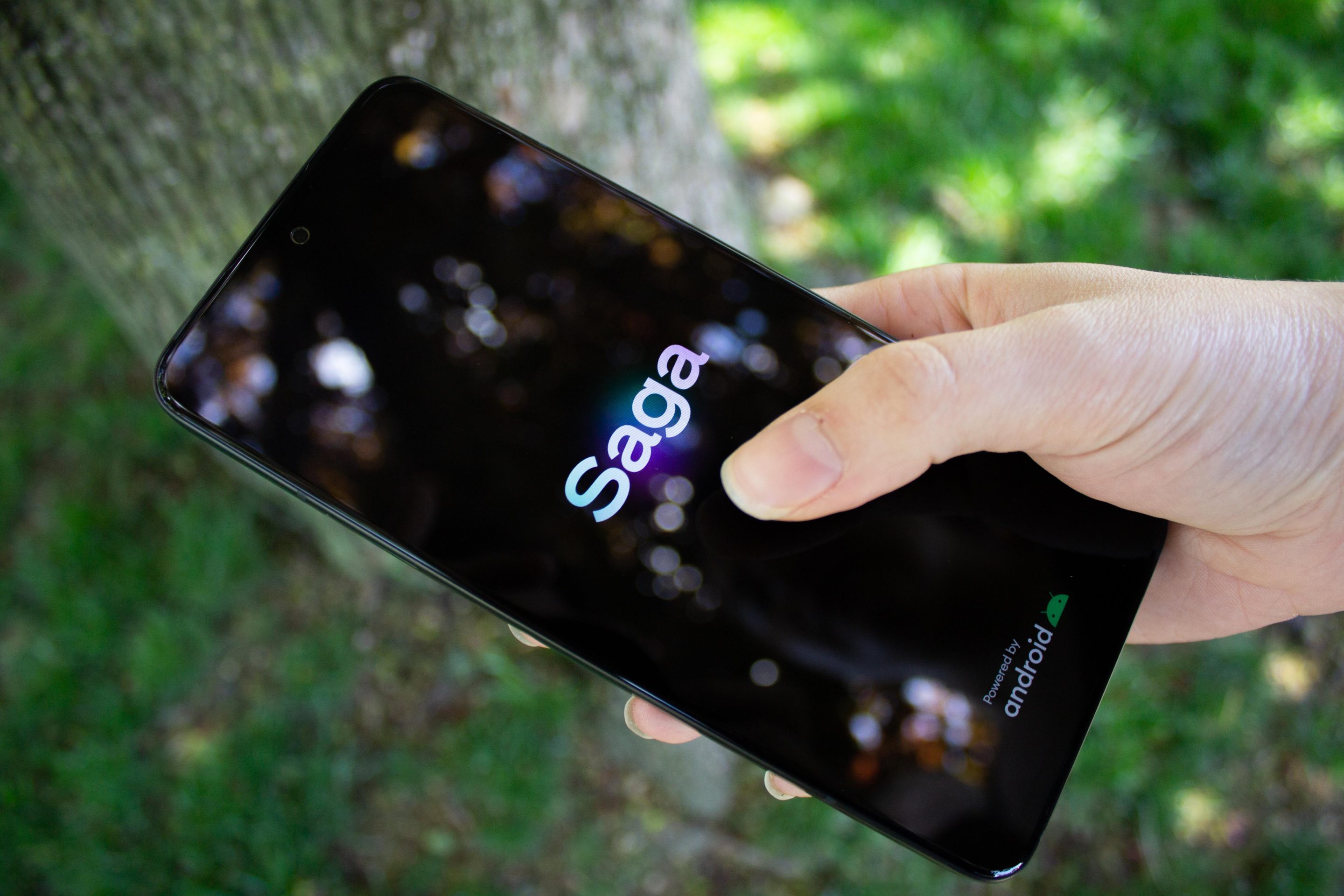 In the mid-aughts, Anatoly Yakovenko, a cofounder of the blockchain Solana, imagined a future where he could wield a handheld computer.Little did he know that, three years later, Apple would release the first iPhone.“It’s crazy, right, how fast that can happen?” Yakovenko, wearing a black T-shirt and baseball cap, said to a rapt audience in New York City last June.But, he added, “That can happen in crypto.” Arguing that “it’s time for crypto to go mobile,” he announced that he and his team were developing the “Saga,” a Web3 smartphone slated to come out in 2023.As of Monday, the phone is finally available for the wider public.This isn’t the first crypto smartphone to hit the market.Will it help “onboard the next billion users,” a refrain Web3 enthusiasts use when talking about how to best evangelize crypto? Or is it a niche offering best reserved for diehard crypto fans? Fortune spent five days with the Saga.Here’s what we thought.At its core, the Saga, which retails for $1,000, is a sleek Android smartphone.Its technical specifications rival that of other phones in the same price tier.Built by OSOM , a smartphone startup, it comes with 512 gigabytes of memory, 12 gigabytes of RAM, and a Snapdragon 8+ Gen1 processor.Unsurprisingly, the Saga was responsive, quick, and it felt seamless to jump between different applications.
In the mid-aughts, Anatoly Yakovenko, a cofounder of the blockchain Solana, imagined a future where he could wield a handheld computer.Little did he know that, three years later, Apple would release the first iPhone.“It’s crazy, right, how fast that can happen?” Yakovenko, wearing a black T-shirt and baseball cap, said to a rapt audience in New York City last June.But, he added, “That can happen in crypto.” Arguing that “it’s time for crypto to go mobile,” he announced that he and his team were developing the “Saga,” a Web3 smartphone slated to come out in 2023.As of Monday, the phone is finally available for the wider public.This isn’t the first crypto smartphone to hit the market.Will it help “onboard the next billion users,” a refrain Web3 enthusiasts use when talking about how to best evangelize crypto? Or is it a niche offering best reserved for diehard crypto fans? Fortune spent five days with the Saga.Here’s what we thought.At its core, the Saga, which retails for $1,000, is a sleek Android smartphone.Its technical specifications rival that of other phones in the same price tier.Built by OSOM , a smartphone startup, it comes with 512 gigabytes of memory, 12 gigabytes of RAM, and a Snapdragon 8+ Gen1 processor.Unsurprisingly, the Saga was responsive, quick, and it felt seamless to jump between different applications.
The photos came out well, and the battery life lasted longer than a day.Compared with a basic 2019 Android smartphone used by Fortune reporter Ben Weiss, it was light years ahead.That being said, its specifications don’t fully measure up to other phones near the $1,000 range.
Google’s flagship model, Pixel Pro , retails at $1,099 for 512 gigabytes of memory.It has the same amount of RAM as the Saga, but the screen has a higher resolution, and its camera has an additional ultra-wide and telephoto lens compared with Saga’s dual-lense ultra-wide lens.For the layuser, though, the Saga is a more-than-powerful-enough phone that can take quality photos and provide a similar experience (often at a lower price point) to top devices on the market.But the Saga isn’t just a premium smartphone.Its selling point is that it’s a Web3 smartphone.Baked into each and every device is the Seed Vault, what Yakovenko calls a secure way to store seed phrases, or master passwords, to crypto wallets.The seed phrase lives outside the phone’s Android operating system, according to Solana Mobile , a subsidiary of Solana Labs.
Any application that prompts a user to authorize a transaction needs to go through gated software.This boils down to a complicated setup process that includes fingerprint scanning, a pin code, and a prompt to manually write down the 24-word seed phrase on a piece of paper included within the phone’s packaging.For newcomers to Web3, it’s confusing, but for those with tens of thousands of dollars in crypto, the security is probably worth it.The other major selling point of the Saga is its decentralized application marketplace, or dApp store, which Yakavenko has positioned as an eventual competitor to Apple’s or Google’s.
As opposed to the tech behemoths, Solana Mobile says that it doesn’t take a cut of developers’ sales.When Fortune tested the smartphone, there were 21 dApps for download, with more on the way, says Yakovenko.We were able to mint an NFT of a selfie, play a racing game, and send NFT stickers to the founder of Dialect, a Web3 messaging app.
It’s one of the more seamless Web3 experiences out there.However, it wasn’t without its bugs, something other outlets have also documented.(Yakovenko said he and his team are “moving as fast” as they can to resolve them.) Alpha League Racing, the racing game, would open only sporadically, and at one point when the phone connected to a new WiFi network, the dApp store was unusable.“This particular bug is a known edge case impacting a very small number of Saga users with certain WiFi router models,” said a spokesperson for Solana Mobile.“While we have identified temporary remediation steps, we have been working on a permanent fix.”Ultimately, for those who live and breathe crypto, the phone allows those to further integrate Web3 into their every day.But for crypto newcomers, the complicated setup process and bugs make the phone’s Web3 features intimidating.Yakovenko is clear that, at least at first, the target market for the Saga isn’t the average smartphone user.“I think it’s going to be really hard to get to hundreds of millions, tens of millions of users,” he told Fortune .
“If we can show traction with ten, twenty thousand users, that’s enough of a distribution channel.”However, the very fact that Solana Labs has invested in a smartphone—a piece of general consumer tech—implies that there’s a vision to sell Web3 to the crypto-naive.And some observers are dubious of its general appeal.“If it’s not differentiated by anything else than this very niche feature set that’s unique to already being a crypto nerd, then I’m very skeptical that this would be a way to get people to start using it,” Hubert Palan, the founder and CEO of Productboard, which makes software for product developers, told Fortune .Philip Shoemaker, who used to work on Apple’s app store and is now the executive director of the Web3 nonprofit Identity.com, is similarly skeptical.The Saga’s features aren’t fully a hit for either crypto enthusiasts or laypeople, he said.The smartphone currently only supports Solana, not other blockchains.
(Yakokvenko says there are plans to make other blockchains compatible with the Saga.) And it doesn’t have the bells and whistles of other premium smartphones on the market.“Right now, they’re just shooting in the middle,” he told Fortune .Anthony Georgiades, a general partner at technology fund Innovating Capital, is more optimistic.
The security features of the phone, including the Seed Vault, make it similar to a hardware wallet but with more capabilities thanks to the dApp store and its use as a phone, he said.That, plus the association with the Solana brand name, makes him believe it has a chance to succeed with Web3 natives, although he has doubts about broader adoption.
“It enables you to interact with the Solana ecosystem directly, in a secure and trustless way, but to also create wallets and store keys in a very seamless, intuitive way,” Georgiades told Fortune .The appeal to a smaller market forms the foundation of Yakovenko’s plan for the Saga, which he has previously called a “ moonshot .” Whether through rave reviews of the smartphone or the emergence of a popular crypto application, he hopes more and more everyday consumers flock to his product.And perhaps it’s the latter—a “killer” app that convinces the next billion users to switch over to Web3—that will finally tilt the balance.“Either one of these attempts succeeds,” Yakavenko concluded in an interview with Fortune , “or crypto as a whole industry just never breaks out into the general consumer public.”.
